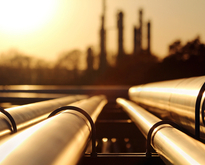EU countries gradually and partially lifted Covid-19 containment measures between May and August. As restrictions on air traffic and the movement of people relaxed, the use of common transport fuels started resuming from the low levels registered in March 2020 and the record lows of April 2020.
Short-term monthly data showed that demand has been resuming towards pre-crisis levels for some of these fuels across the EU, but most values remained below average.
In August 2020, EU* deliveries of gasoline and diesel increased by 103% and 20% respectively from April levels, but were still 5% and 11% below the average August deliveries over the last 3 years.
Liquified petroleum gas (LPG) deliveries increased by 6% in the same period but remained 6% below the average for August.
Deliveries of fuel oil, which is used in maritime transport, increased by 9% from April to August but was still 21% below the average for August.
The national and international air-traffic limitations and the restrictions on the international movement of people are still having a major impact on kerosene demand, which includes kerosene-type jet fuel for air transport. In the EU, demand increased by 123% from its lowest level this year but was still 55% below the average for August, a period marked by holiday travel. This reduction corresponds to almost 2.5 million tonnes not used in August 2020, compared to the same month in the previous years.
* For the purpose of this article, EU aggregates include 26 EU Member States, as data are not available for Austria.
Source dataset: nrg_jodi
Deliveries of oil products partially resumed by August across the EU
By August 2020, delivery of gasoline in all EU Member States resurged from this year’s record lows. The largest quantity increases compared with April 2020 were observed in France (+589 000 tonnes, +267%) and Italy (+460 000 tonnes, +280%). France fully recovered, recording +9% above the average value for August, while Italy was still 16% below its average.
Spain registered the largest percentage change from April (+387%) but remained 5% below its average August.
Diesel deliveries increased in most EU Member States. The strongest recoveries in absolute values compared with April 2020 were observed in Italy (958 000 tonnes, +86%), which however remained 9% below its average, and France (+735 000 tonnes, +31%) which also remained 16% below its average. Some countries, however, recorded drops in August compared to April, including Greece (-43%), Belgium (-33%) and Finland (-10%).
Both LPG and fuel oil showed diverse trends across the EU. In absolute values, the largest contraction in LPG demand was in Germany (80 000 tonnes, -25%) and the largest increase in demand of fuel oil was in Sweden (85 000 tonnes, +51%).
Kerosene deliveries were still largely lagging in August. Although deliveries increased in most EU Member States compared to April, none approached their historical average levels. The largest increases were observed in Germany (+260 000 tonnes, +104%) and in Italy (+221 000 tonnes, +176%). Yet compared to the average monthly levels, the figures for August were still very low across the board, with the smallest decline recorded in Luxembourg (-18%) and the most severe slump recorded in Sweden (-77%).
Source dataset: nrg_jodi
For more information
- Eurostat website section dedicated to energy statistics
- Eurostat database of energy statistics
- “What’s new” article on oil product deliveries in March 2020
- “What’s new” article on oil product deliveries in April 2020
Methodological note: The term ‘deliveries’ include deliveries or sales to the inland market (for domestic consumption), the amounts used as refinery fuel and deliveries to international marine bunkers and aviation bunkers.
To contact us, please visit our User Support page.
For press queries, please contact our Media Support.
